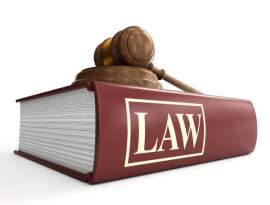
How Do You File for Divorce

How Do You File for Divorce?
That ultimately is the important question, especially when considering a serious issue as ending a marriage. Many don’t know what to do except to hire an attorney who does, but what if there’s no financial possibility to hire a lawyer? What does a Petitioner do?
Here are the answers:
Obtain a Petition Document
The first step is to head for the county courthouse when answering the question: how do you file for divorce? The correct documents are absolutely necessary, without a doubt.
In addition, if it just so happens that the petition may be a no-fault divorce, a Marital Settlement Agreement will be necessary for both parties to be present as well as a notary public. What happens is both parties arrive either in the courthouse or another established location handling family law, and a Marital Settlement Agreement is drawn up with every single provision and stipulation – everything from property distribution to support to even alimony.
Both parties sign the document, and then it’s only a matter of the document getting filed in court and a waiting period to begin followed by an eventual court decision on the judgment for divorce.
The question, “how do you file for divorce?” though gets a little trickier when both parties disagree. The petition then becomes contested where the Petitioner (the spouse seeking divorce) obtains the petition, signs it, has the other spouse sign it, files it, and then receives from the Respondent (the spouse in this case not wanting divorce) a legal “response” to the petition stating a disagreement.
That is an entirely different issue regarding a contest or dispute over the divorce petition.
For the purposes of learning how to file for divorce, dealing with no-fault issues and the general process is prudent in this case.
The next step?
The Financial Statement and Consent, Appearance and Waiver
A Petitioner may still ask the question “how do you file for divorce?” when still facing additional points of the process even after filing for the initial petition. That’s normal, as there are other documents to consider, requiring the information and signature of the other spouse.
A “Financial Statement” with employer information is necessary as well as a form stating that both parties will either be present for the court hearing (if there is one) or not. That form dealing with the latter is typically called the “Consent, Appearance and Waiver.”
It is mandatory in any divorce proceeding.
Thirdly, There’s the Child Custody Jurisdiction Form
One other answer to the question “how do you file for divorce?” is the fact that both parties need it in writing that child custody has been decided. That’s what the “Child Custody Jurisdiction Form” is for.
It outlines both a stipulation agreeing for joint or sole physical custody, and joint or sole legal custody. Both parties sign it in agreement, and the document is filed in court as part of the divorce process.
Then the Final Judgment
From there, the question “how do you file for divorce?” turns into simply a divorce, finalized and written up to completion. A judge may even say a few words to the Petitioner, and maybe a few words to the Respondent, but otherwise the rest is history.



















